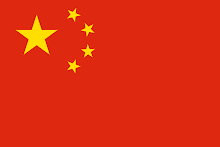China's state enterprises aren't dinosaurs
Rowan Callick, China correspondent
August 11, 2008
The Australian
THE Olympic Games comprise China's most prominent
state-owned enterprise.
In some other countries, including Australia, the Olympics,
and sport in general, are chiefly the realm of volunteers,
of corporations, of a discrete professional world.
But there is no disguising that these Olympics are
inseparable from China Inc.
This is a good time, then, to take a look at the realm of
state-owned enterprises (SOEs), mostly set up under Mao
Zedong, which a few years back some portrayed as dinosaurs
about to pass into extinction.
Instead, as Barry Naughton, professor of Chinese economy at
the University of California, San Diego, says in the latest
edition of the influential China Economic Quarterly: "Since
their low point in the mid-1990s, China's SOEs have made a
stunning return to profitability."
In 1997 the entire state-owned industrial sector returned a
net profit of just below 0.6 per cent of China's gross
domestic product.
Ten years later, the sector's profits constituted 4.2 per
cent of a much, much larger GDP, while the non-industrial
SOEs scored a further 2 per cent of GDP in profits.
One of the reasons, Naughton points out, is that "the
Government has been willing to subordinate other agendas
such as privatisation to the quest for a robust state
enterprise sector that was financially self-sufficient and
able to contribute to the government revenue base as well".
This quest began with the closure of thousands of
loss-making SOEs, described by economists in the mid-1990s
as "zombie firms", the living dead, kept alive mainly
because no one else could think what to do with the
millions of workers they employed.
Crucially, the Government removed from SOEs the
responsibility for providing social welfare for their
workers, the old "iron rice bowl". The process of
reinstating adequate provision of such services outside the
workplace remains an arduous one, barely begun, but that's
another story.
The number of industrial SOEs dived from 80,000 to 26,000
in 10 years.
This enabled the Government to concentrate on a number of
strategic sectors, in which it intends to retain a firm
--even monopolistic, but more commonly, oligopolistic
--grip. They include energy, power, industrial raw
materials, defence, large-scale machinery, transport and
telecommunications. Financial services are state dominated.
In some areas, non-government competitors are banned. In
others, says Naughton, "high capital requirements combine
with discriminatory regulatory treatment to discourage
non-state entrants even when they are theoretically
allowed".
The core 153 enterprises answer to their Chinese
shareholders via the state-owned assets Supervision and
Administration Commission (SASAC), which reports to the
State Council led by Premier Wen Jiabao.
There are now three national oil companies, four telcos,
and three airlines that carry 82 per cent of domestic
passengers.
China's 31 provinces, regions and municipalities also each
operate a large number of local SOEs, though their numbers
have been pruned and their efficiency raised in a parallel
drive to that at the national level.
Overall, in 1995 China had 7.6 million SOEs, more than 80
per cent of all businesses, of which two-thirds were
collective enterprises, the others traditional SOEs.
In 2006, PetroChina, Sinopec, China National Offshore Oil,
China Mobile, China Telecom, Baosteel, Chinalco, Shenhua
Energy and the state Electricity Grid produced 69 per cent
of the profits of all 153 centrally owned SOEs.
In Australia, a misleading perception has emerged, that we
have been the winners out of the commodity boom and China
has been the chief victim, having to cough up for the
inputs of its insatiable industrial machine.
But Naughton points out the situation on the ground in
China is very different.
"Control of resource extraction and processing sectors by
central SOEs has meant that they have profited handsomely
from the global resource boom, which in turn is largely a
result of the Chinese investment boom that SOE
restructuring helped to create, and changed global relative
prices massively in favour of raw materials."
Chinese SOE resource companies are also expanding
production overseas, as Australians know.
Treasurer Wayne Swan says that every nine days he has
approved a Chinese bid to invest, with China's investment
here as a result tripling from $3.5 billion in 2006 to $10
billion last year and being set to triple again, to $30
billion, by the end of 2008.
It is China's retail manufacturers that pay, in squeezed
margins, for the commodities boom and they are being forced
to pass their higher costs on to global consumers.
As long as this does not cause massive job losses or
inflation driven by food and oil prices, China's Government
is prepared to stand back and watch the trend continue.
Because manufacturing in China, unlike the resource
industry, is increasingly privately owned, and the export
sector involves substantial foreign ownership, about 60 per
cent of China's exports come from sources fully or
substantially foreign owned.
All SOEs have been corporatised to a large degree, with
boards that include an outsider or two. Managers mostly
operate under three-year contracts with a performance
component. In 12 years, the debt-to-assets ratio of
industrial SOEs has been reduced from 68 per cent to 57 per
cent.
This year -- the icing on the cake for the Government
--Premier Wen has succeeded in forcing almost all sectors
to pay the state dividends, rather than retain their
profits to boost management and board perks, and to
reinvest them, sometimes before the equities collapse this
year in the share market, sometimes resulting in
overcapitalised assets. Most are now paying 5 per cent of
post-tax profits back to the Government.
But although SOEs mostly lack accountability to the holders
of the minority stakes sold on share markets, pressure to
perform continues, from the Government itself.
Only the top three businesses in each sector will survive,
SASAC has warned.
Thus in some paddocks of China's Animal Farm, it's dog eat
dog.
Naughton says that SASAC "encourages firm strategies
organised around commercial, service or investment markets,
not just traditional industrial production".
Under dynamic chairman Huang Tianwen, Sinosteel,
principally a provider of logistic and technological
services to China's steel industry, propelled its revenues
to $US15 billion in 2007, placing it fairly firmly on high
ground if and when SASAC starts its next cull. Every one of
the 22 Chinese corporations on the Fortune 500 list is
state owned, 16 by SASAC, five financial institutions and
just one -- Shanghai Automobile -- by a local government.
Arthur Kroeber, managing director of research firm
Dragonomics, and Rosealea Yao, research manager, say:
"Chinese policy makers have succeeded in the task they set
themselves in 1995 to zhuada fangxiao (keep the big, lose
the small)".
It is the fast-growing private sector, flourishing in areas
like retail and manufacturing, that has sucked up many of
the jobs shed by downsizing SOEs.
From 1995-2006, the state sector of employment fell from 77
per cent to 35 per cent. The private share soared from 20
per cent to 60 per cent. But, Krober and Yao stress that
"economic power remains firmly concentrated in the hands of
the state".
In 2006, the top 10 SOEs were eight times bigger than the
top 10 private firms.
They point out that the state share of revenues in banking
is 94 per cent and in insurance 97 per cent.
Jonathan Woetzel writes in the latest McKinsey Quarterly:
"The line between SOEs and private companies has blurred.
Over the next five years their ownership structure will
matter much less than their degree of openness, their
transparency and receptiveness to new ideas."
This is true to a degree.
The Chinese central Government has proved itself an
adaptable and subtle manager of its own assets. But
ownership and control continue to count a great deal.
Is there a real prospect for change?
Chen Zhiwu, finance professor at Yale school of management,
says privatising China's assets would "unleash a wealth
effect and boost domestic consumption", transforming the
growth model from the present drivers of investment and
exports.
Unlike eastern Europe and Russia when they embarked on
their convulsive privatisations, he believes "China is
operationally ready" for a change of ownership. That makes
sense. But don't hold your breath.
Tuesday, 19 August 2008
Subscribe to:
Post Comments (Atom)




No comments:
Post a Comment